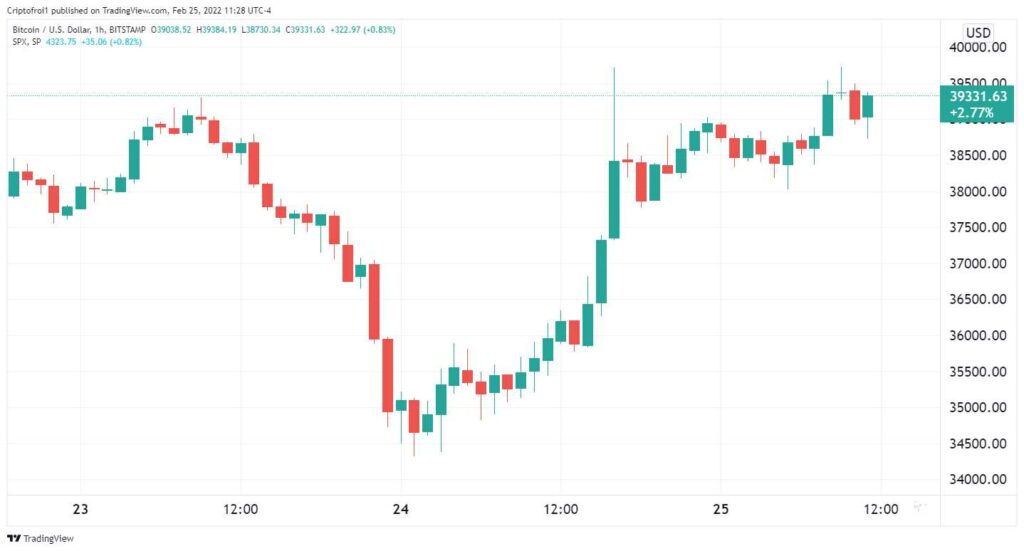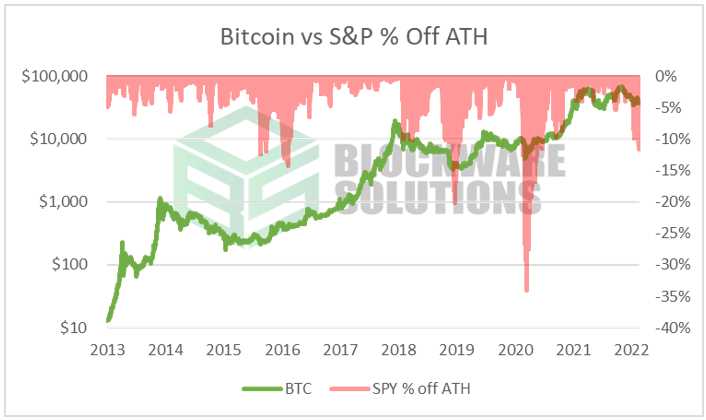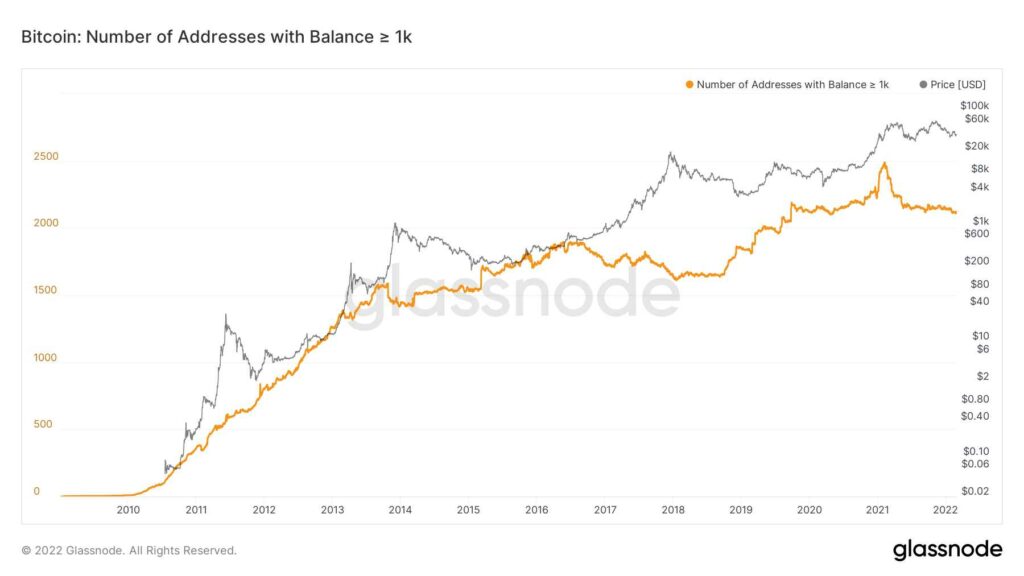Mercados al día is an exclusive summary of the news that moves the bitcoiner economy. It is sent in advance by email to a list of subscribers and then published every Monday in CriptoNoticias. If you want to have the information in advance, subscribe to the list here.
This Wednesday, February 23, the Russian military advance in Ukraine took place, which caused a decline in most markets around the world, including bitcoin and cryptocurrencies.
As reported by CriptoNoticias, bitcoin was affected along with the main traditional actions due to the start of hostilities, while gold registered a rebound between Wednesday night and Thursday morning.
For some analysts and traders, the confrontation in Europe was not the dominant cause of this decline in bitcoin. The reason, rather, could have been the automation of trading decisions, through software robots or bots in conjunction with the high correlation between traditional assets and bitcoin, as reported in this medium.
According to the position of the founder and CEO of the decentralized exchange FTX, Sam Bankman-Fried (SBF), commented by CriptoNoticias, the initial volatility of bitcoin with a downward trend this Wednesday, it would have been due to a confrontation between two types of traders.
SBF was referring to those traders who are guided by the fundamental parameters of the network and those referred to by SBF as «algorithmic traders». The latter even contemplated a 1 to 4 ratio between the percentage variation of the S&P 500 and that of bitcoin.
The reaction of the markets to the conflict between Russia and Ukraine, initially downward, was the subject of an analysis by CriptoNoticias, in which the opinions of traders and analysts were consulted. According to the economist José Miguel Farías, it is very difficult to predict the behavior of the markets, especially if there are hundreds of possible scenarios, with variables that are not controlled. On the other hand, the analyst Eduardo Gavotti points out that what mainly affects bitcoin is not the geopoliticalbut the changes in monetary policy that have affected the financial markets.
Bitcoin price rebound after initial drop
After the fall in the price of bitcoin, there was a rebound on Thursday afternoon, which brought the price to close to USD 40,000, as reported by CriptoNoticias. Following the bounce, bitcoin has been trading sideways around $39,000 as of this writing.

The rise in Wall Street stocks could have occurred because long-term investors took advantage of lower prices to buy at discount prices.
As for bitcoin, the fact that the support of USD 35,000 was maintained could have favored the perception of investors that they are facing a risky asset whose price can consolidate after this crisis. The BTC price at the time of writing is USD 38,931.
Featured chart of the week
Given the increasing correlation of bitcoin and traditional stocks, analyst Joe Burnett of Blockware Solutions proposes that there is a close correlation between correction lows in the S&P 500 stock index and bitcoin price lows.

Burnett specifies the key dates on which a minimum of the bitcoin cycle coincided with a more than 10% drop in the S&P 500 index below their respective ATH. These dates include March 2020 and February 2022.
Bitcoin whales decrease and little fishes increase
The number of bitcoin addresses with more than 1,000 BTC, associated with the so-called whales, have been decreasing for a year. While the number of addresses cannot be associated with entities or users, it was close to 2,500 at the beginning of 2021, and is currently just over 2,000.

Meanwhile, addresses with at least 0.01 BTC or 0.1 BTC are at all-time highs. Currently, 9.46 million addresses have at least 0.01 BTC, equivalent to 39 dollars at the current price of bitcoin.
Institutional investment in bitcoin is maintained
Despite the bearish phase that bitcoin has been going through since mid-November, investment funds have dedicated some USD 221 million in the last 5 weeks to that cryptocurrency and others such as ether (ETH) and stablecoins.
In the last week, institutional investment in cryptocurrencies increased by $109 million, despite the weakness in prices and the negative impact of the conflict in Eastern Europe.
A report by CoinShares, the largest cryptocurrency fund manager in Europe, indicates that so far in February, institutional investments have increased to total USD 259.8 million.
